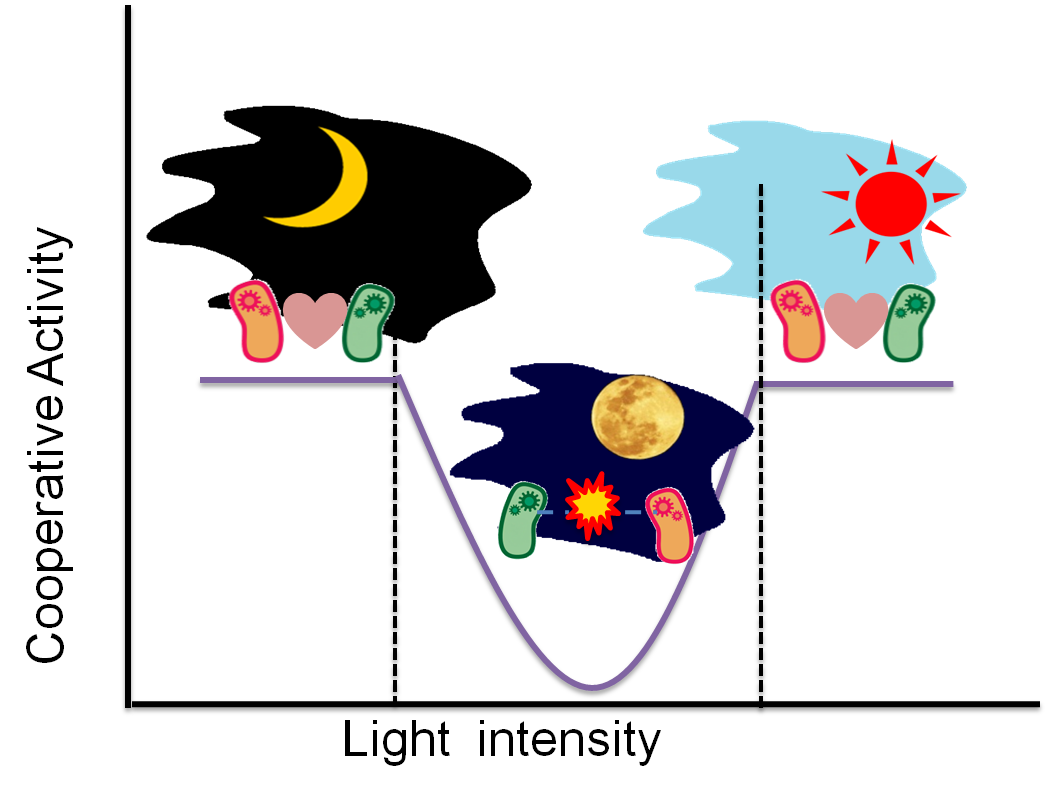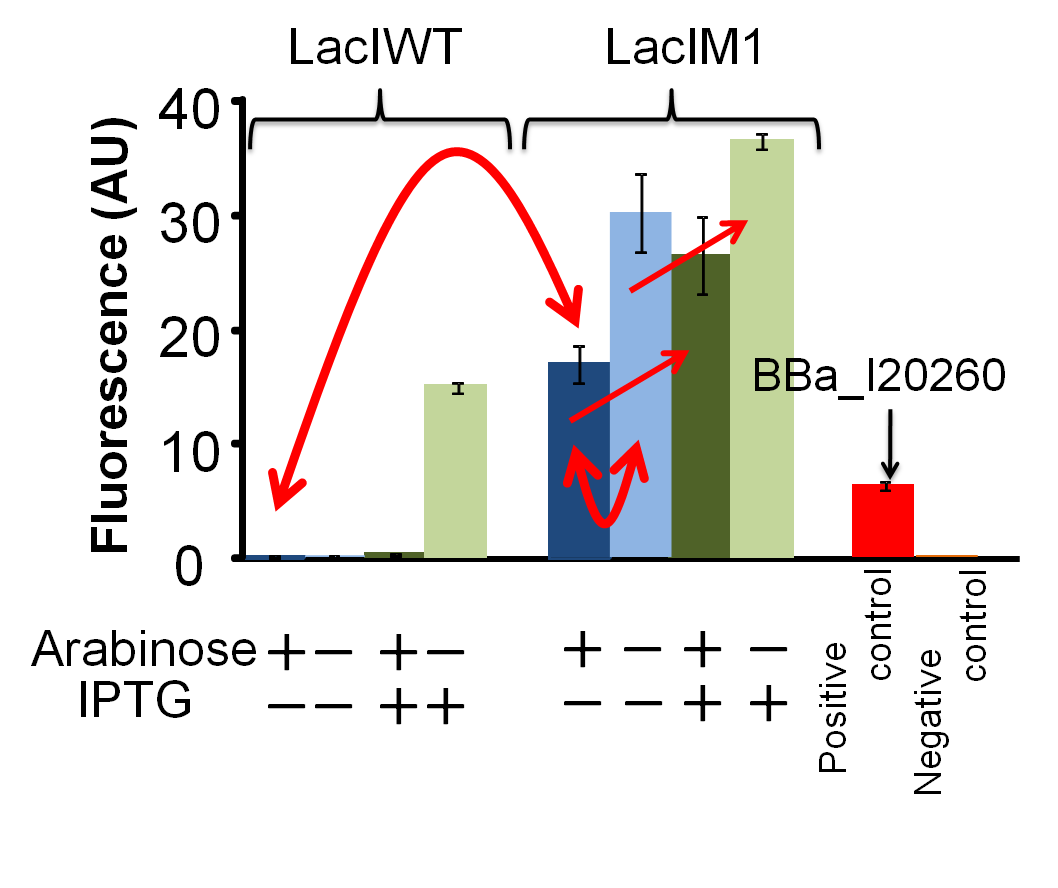Team:Tokyo Tech/Project/wolf coli
From 2010.igem.org
(→1.Characterization of new series of PompC) |
|||
| Line 3: | Line 3: | ||
<div id="tf_menu"> | <div id="tf_menu"> | ||
| - | menu | + | <font size="5" color="#eb8300"><b><center>Project menu</center></b></font> |
| - | [[Team:Tokyo_Tech/Project/wolf_coli/New_Series_of_PompC| | + | |
| + | <center> | ||
| + | <table id="table-01"> | ||
| + | <tr> | ||
| + | <td>[[Team:Tokyo_Tech|1 Concept]]<br> | ||
| + | </td> | ||
| + | </tr> | ||
| + | <td>2 Apple reporter<br> | ||
| + | :[[Team:Tokyo_Tech/Project/Apple|2-1 Color]] | ||
| + | ::[[Team:Tokyo_Tech/Project/Apple/Results|2-2-1 Apple color results]] | ||
| + | :[[Team:Tokyo_Tech/Project/Apple2|2-2 Fragrance]] | ||
| + | </td> | ||
| + | <tr> | ||
| + | <td>[[Team:Tokyo_Tech/Project/Artificial_Cooperation_System|3 Artificial Cooperation System]]<br> | ||
| + | :[[Team:Tokyo_Tech/Project/Artificial_Cooperation_System/lux_act_rep|3-1 lux activation/repression promoter]] | ||
| + | :[[Team:Tokyo_Tech/Project/Artificial_Cooperation_System/Cm_assay|3-2 resistance gene activation device]] | ||
| + | :[[Team:Tokyo_Tech/Project/Artificial_Cooperation_System/luxI_assay|3-3 ''lux''I Assay]] | ||
| + | :[[Team:Tokyo_Tech/Project/Artificial_Cooperation_System/modeling|3-4 modeling]] | ||
| + | </td> | ||
| + | </tr> | ||
| + | <tr> | ||
| + | <th>4 wolfcoli overview -YOUR ARE HERE!-<br> | ||
| + | :[[Team:Tokyo_Tech/Project/wolf_coli/New_Series_of_PompC|4-1 the new seriesof P''ompC'']] | ||
| + | :[[Team:Tokyo_Tech/Project/wolf_coli/lacIM1|4-2 lacIM1 for band-detect network ]] | ||
| + | :[[Team:Tokyo_Tech/Project/wolf_coli/wolfcoli/System|4-3 wolfcoli system]] | ||
| + | </th> | ||
| + | </tr> | ||
| + | </table> | ||
| + | </center> | ||
| + | |||
| - | |||
</div> <!-- tf_menu --> | </div> <!-- tf_menu --> | ||
| - | <div id="tf_SubWrapper"> | + | <div id="tf_SubWrapper"> |
| - | = | + | <font size="5"><b>4 wolfcoli overview</b></font> |
| + | |||
| + | |||
=Abstract= | =Abstract= | ||
It came to our mind that changing the regulator of ACS, we could endow E.coli with complicated behavior. As a first step of our challenge, we aimed to design “Wolfcoli” inspired by famous legend of wolfman. When there is intermediate light intensity, two cells doesn’t help each other at only full-moon night . From these behaviors, we call this “Wolfcoli” (Fig. 3-1). In our attempt to produce a “wolfcoli”, we introduced the "a red-light-dependent gene expression network"[1] and "band-detect network"[2] into the Artificial Cooperation System (Fig. 3-2). We conducted experiment about PompC and LacIM1, which are key parts of each network. | It came to our mind that changing the regulator of ACS, we could endow E.coli with complicated behavior. As a first step of our challenge, we aimed to design “Wolfcoli” inspired by famous legend of wolfman. When there is intermediate light intensity, two cells doesn’t help each other at only full-moon night . From these behaviors, we call this “Wolfcoli” (Fig. 3-1). In our attempt to produce a “wolfcoli”, we introduced the "a red-light-dependent gene expression network"[1] and "band-detect network"[2] into the Artificial Cooperation System (Fig. 3-2). We conducted experiment about PompC and LacIM1, which are key parts of each network. | ||
Revision as of 11:38, 27 October 2010
4 wolfcoli overview
Contents |
Abstract
It came to our mind that changing the regulator of ACS, we could endow E.coli with complicated behavior. As a first step of our challenge, we aimed to design “Wolfcoli” inspired by famous legend of wolfman. When there is intermediate light intensity, two cells doesn’t help each other at only full-moon night . From these behaviors, we call this “Wolfcoli” (Fig. 3-1). In our attempt to produce a “wolfcoli”, we introduced the "a red-light-dependent gene expression network"[1] and "band-detect network"[2] into the Artificial Cooperation System (Fig. 3-2). We conducted experiment about PompC and LacIM1, which are key parts of each network. We succeeded in designing 2 news osmoregulative promoters, POmpC(CB) and POmpC(CS1), which can also be utilized in the red-light-dependent gene expression network (Fig. 3-3). (詳しくは下へ) We have characterized lacIM1 (BBa_K082026) which is the key component in the band-detect network. Though this part was registered by USTC(2008) [3], it was not well characterized in their wiki. We found that lacIM1 shows weaker repression than WT (Fig. 3-4). (詳しくは下へ)
Introduction
What is “Wolfcoli” ?
As I mentioned before, in normal situation, when the Artificial Cooperation System is on, two cells are able to communicate each other, and help the other cell. On the other hand, when the system is off, two cells are competitors and recognize each other by using quorum sensing. (Artificial Cooperation System 参照) In order to assemble a more intelligible and imaginable system, we linked our project to a well-known character ”Wolfman”. When there is intermediate light intensity, two cells doesn’t help each other at only full-moon night . From these behaviors, we call this “Wolfcoli” (Fig. 3-1).
・At crescent moon night (Weak light intensity)
When there is weak light intensity, Artificial Cooperation System turns on, and two cells are able to communicate. Then, two types of cell help each other.
・At daytime (Strong light intensity)
When there is strong light intensity, Artificial Cooperation System turns on, and two cells are able to communicate, too. Then, two types of cell also help each other.
・At full moon night (Intermediate light intensity)
When there is intermediate light intensity, Artificial Cooperation System turns off, and two cells can’t communicate. two cells start competing with each other at full-moon night . From these behavior, we call this “Wolfcoli”.
This system is able to be accomplished by integrating the red-light-dependent gene expression network(3階層目へ) and the band-detect network (3階層目へ) (Fig. 3-2).
(また、Wolfcoliの詳しい説明はこちらへ)
Results
We conducted experiment about PompC and LacIM1, which are key parts of each network.
1.Characterization of new series of PompC
We succeeded in designing 2 news osmoregulative promoters, POmpC(CB) and POmpC(CS1), which can also be utilized in the red-light-dependent gene expression network. (Fig. 3-3) (詳しくはこちらへ)
2.Characterization of LacIM1(BBa_K082026)
We confirmed that lacIM1 shows weaker repression than WT (Fig. 3-4) (詳しくはこちらへ)
Conclussion
We characterized key parts of building the “Wolfcoli” system.
Reference
1. Levskaya A, Chevalier AA, Tabor JJ, et al. Engineering Escherichia coli to see light. NATURE 2005;438, 441-442
2. Basu S, Gerchman Y, Collins CH, et al. A synthetic multicellular system for programmed pattern formation. NATURE 2005;434,1130-1134
3.USTC(2008)
 "
"



